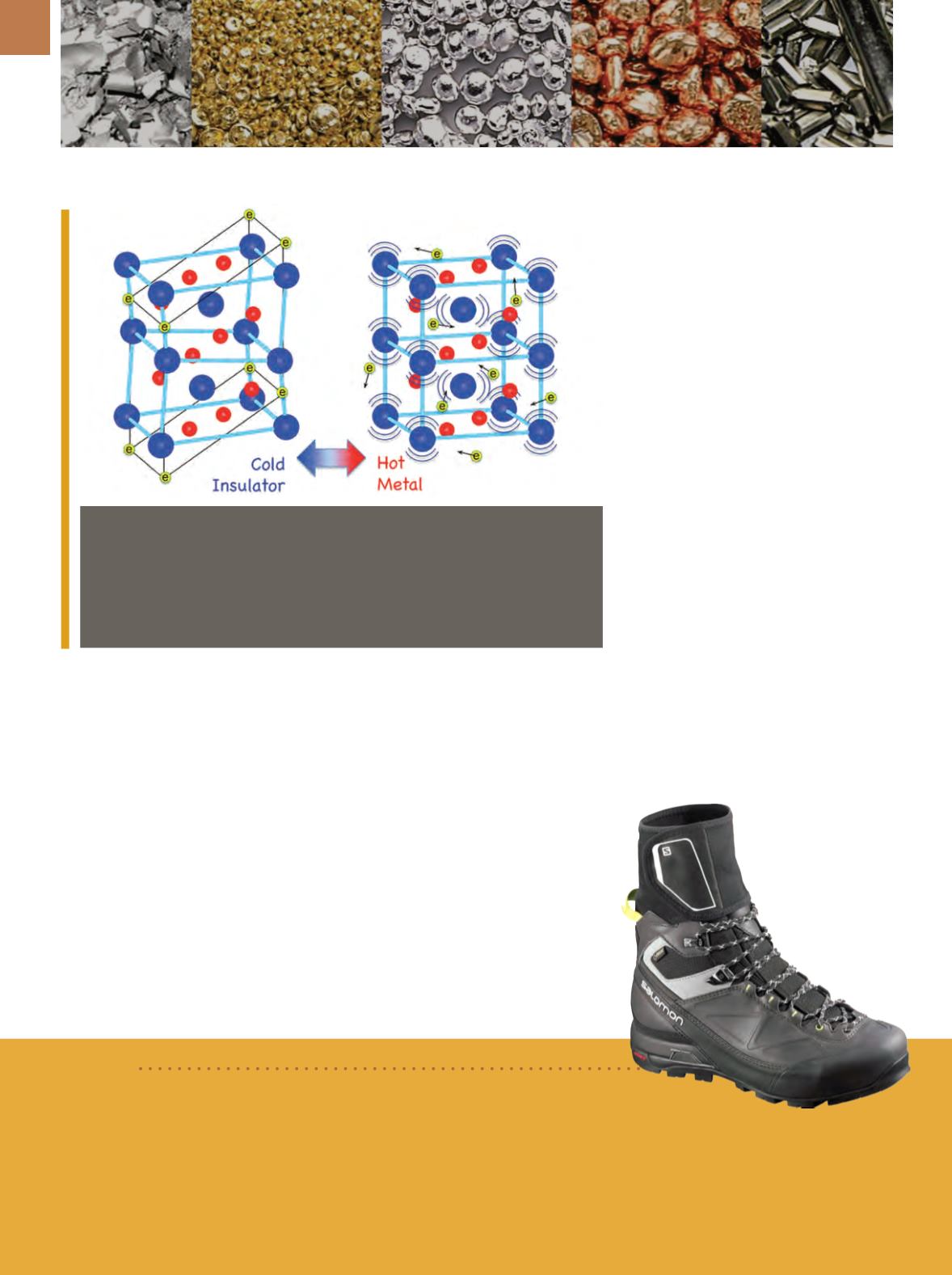

A D V A N C E D M A T E R I A L S & P R O C E S S E S | M A Y 2 0 1 5
1 0
METALS | POLYMERS | CERAMICS
SOLVING A 50-YEAR-OLD
VANADIUM DIOXIDE MYSTERY
At the transition temperature, va-
nadiumdioxide’s electrical conductivity
abruptly increases by a factor of 10,000
and the atomic lattice rearranges from
a monoclinic to a tetragonal structure.
A fundamental description of the phys-
ical and electronic properties during
the transition in VO
2
has remained con-
troversial for more than 50 years. Now,
researchers at Oak Ridge National Lab-
oratory, Tenn., are using advanced neu-
tron and x-ray scattering experiments at
DOE facilities, coupled with large-scale
first-principles calculations with super
computers, to determine the detailed
mechanism for the transition.
Their studies reveal that the ther-
modynamic force driving the insula-
tor-to-metal transition is dominated by
the lattice vibrations (phonons) rather
than electronic contributions. In addi-
tion, adirect, quantitativedetermination
of the phonon dispersions was achieved,
as well as a description of how chang-
ing occupancies in the atomic orbitals
participate in the phase transition. The
low-energy phonons change the bonds
between atoms (i.e., electron orbitals),
allowing some electrons to travel freely
at higher temperatures leading to a me-
tallic state. This research demonstrates
that anharmonic lattice dynamics play
a critical role in controlling phase com-
petition in metal oxides, and provides
the complete physical model vital for
the predictive design of new materials
with unique properties.
ornl.gov.
COOKING UP ANTIBACTERIAL
PLASTIC FOR HEALING
Bioplastics made from protein
sources such as albumin and whey show
significant antibacterial properties, find-
ings that could eventually lead to their
use in medical applications such as
wound healing dressings, sutures, cathe-
ter tubes, and drug delivery, according to
a recent study by the University of Geor-
gia College of Family and Consumer Sci-
ences, Athens. Researchers tested three
nontraditional bioplastic materials—al-
bumin, whey, and soy proteins—as alter-
natives toconventional petroleum-based
plastics that pose risks of contamination.
In particular, albumin, a protein found in
egg whites, demonstrates tremendous
antibacterial properties when blended
with a traditional plasticizer such as glyc-
erol.
uga.edu.Changes in the crystal structure and electronic properties of VO
2
occur during its in-
sulator-to-metal phase transition (V blue; O red). Above 67°C (right), large-amplitude,
nonlinear lattice vibrations (phonons) lead to a tetragonal crystal structure with
mobile electrons (yellow) indicating that the vanadiumdioxide is a metal. At lower
temperatures (left), the electrons are localized in the atomic bonds in the distorted
monoclinic crystal structure indicating that the vanadiumdioxide is an insulator.
Courtesy of ORNL.
BRIEF
A new mountaineering shoe called the Edging Chassis from
Salomon,
France,
uses the high-performance, bio-based EcoPaXX polyamide from
Royal DSM,
the Netherlands.
EcoPaXX enables production of a chassis with an intricate design that is light and flexible yet rigid, retains its proper-
ties at low temperatures, and has reduced moisture uptake, despite being a polyamide. The material is suitable for
injection molding and certified as carbon neutral.
ecopaxx.com.
Image courtesy of DSM Engineering Plastics.


















